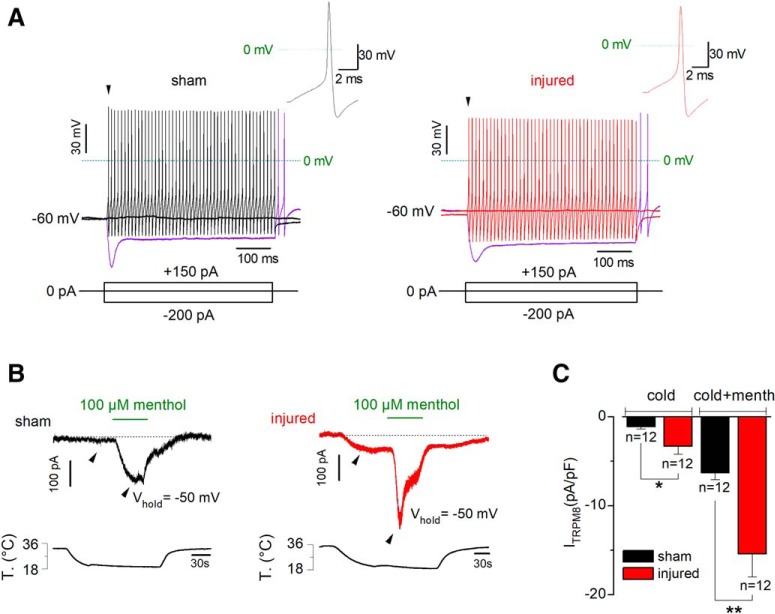Figure 4.
Electrophysiological properties and TRPM8-dependent current of CCSNs from sham and injured mice. A, Voltage responses to 500 ms hyperpolarizing and depolarizing current pulses (Iext; bottom) from a representative sham (left) and injured (right) CCSNs. Note the fast tonic discharge, the sag at negative membrane potentials and the presence of rebound firing in both neurons (purple traces). Insets, First action potential of the neurons in A (black arrowheads). B, Simultaneous recording of whole-cell current (top) and bath temperature (bottom) during a long cooling step (20°C) combined with application of menthol (100 μm) in a representative CCSN from sham (left) and injured (right) mice (Vhold= −50 mV). C, Bar plot summarizing the mean cold- and cold + menthol-induced current densities in CCSNs isolated from control and injured animals (t(13) = 2.241, *p = 0.0431 and t(13) = 3.288, **p = 0.0059; unpaired t test with Welch's correction).

